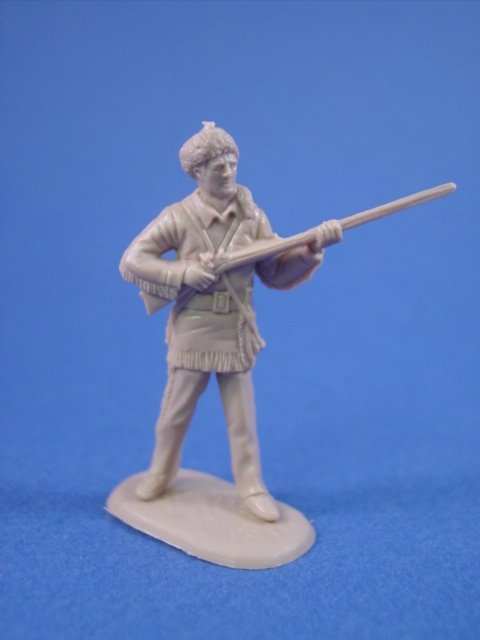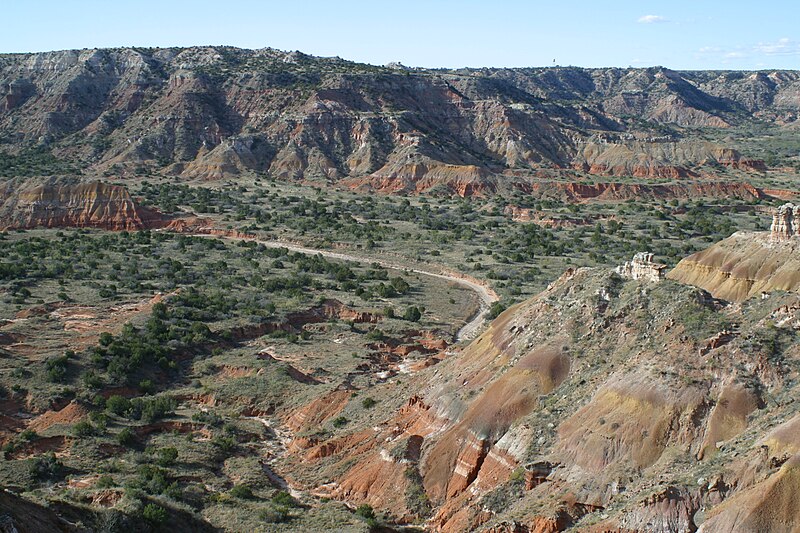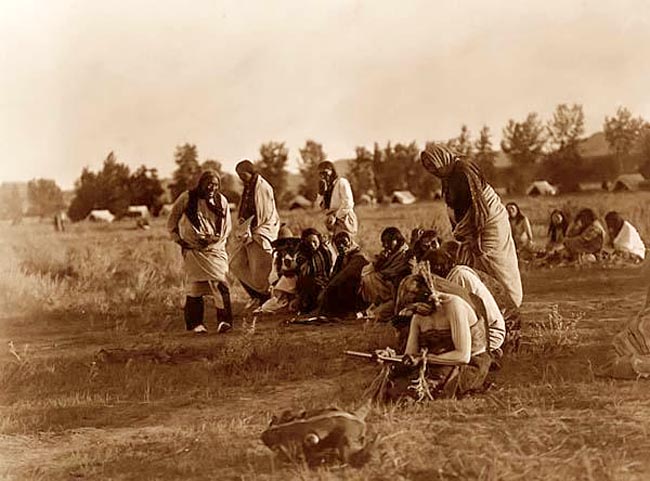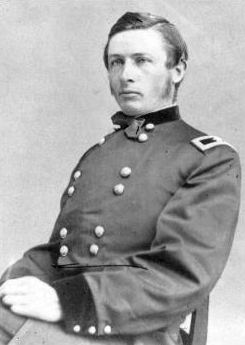
CHAPTER I.
St. Albans, Vermont is near the eastern shore of , and only a short distance south of "Five-and-forty north degrees" which separates the United States from Canada, and some sixty or seventy miles from the great St. Lawrence River and the city of Montreal. Near here it was, on April 6th, 1820, I was born, so the record says, and from this point with wondering eyes of childhood I looked across the waters of the narrow lake to the slopes of the Adirondack mountains in New York, green as the hills of my own Green Mountain State.
and some sixty or seventy miles from the great St. Lawrence River and the city of Montreal. Near here it was, on April 6th, 1820, I was born, so the record says, and from this point with wondering eyes of childhood I looked across the waters of the narrow lake to the slopes of the Adirondack mountains in New York, green as the hills of my own Green Mountain State. 
The parents of my father were English people and lived near Hartford, Connecticut, where he was born. While still a little boy he came with his parents to Vermont. My mother's maiden name was Phoebe Calkins, born near St. Albans
where he was born. While still a little boy he came with his parents to Vermont. My mother's maiden name was Phoebe Calkins, born near St. Albans  of Welch parents, and, being left an orphan while yet in very tender years, she was given away to be reared by people who provided food and clothes, but permitted her to grow up to womanhood without knowing how to read or write. After her marriage she learned to do both, and acquired the rudiments of an education.
of Welch parents, and, being left an orphan while yet in very tender years, she was given away to be reared by people who provided food and clothes, but permitted her to grow up to womanhood without knowing how to read or write. After her marriage she learned to do both, and acquired the rudiments of an education.
Grandfather and his boys, four in all, fairly carved a farm out of the big forest that covered the cold rocky hills. Giant work it was for them in such heavy timber—pine, hemlock, maple, beech and birch—the clearing of a single acre being a man's work for a year. The place where the maples were thickest was reserved for a sugar grove, and from it was made all of the sweet material they needed, and some besides. Economy of the very strictest kind had to be used in every direction. Main strength and muscle were the only things dispensed in plenty.  The crops raised consisted of a small flint corn, rye oats, potatoes and turnips. Three cows, ten or twelve sheep, a few pigs and a yoke of strong oxen comprised the live stock—horses, they had none for many years. A great ox-cart was the only wheeled vehicle on the place, and this, in winter, gave place to a heavy sled, the runners cut from a tree having a natural crook and roughly, but strongly, made.
The crops raised consisted of a small flint corn, rye oats, potatoes and turnips. Three cows, ten or twelve sheep, a few pigs and a yoke of strong oxen comprised the live stock—horses, they had none for many years. A great ox-cart was the only wheeled vehicle on the place, and this, in winter, gave place to a heavy sled, the runners cut from a tree having a natural crook and roughly, but strongly, made. In summer there were plenty of strawberries, raspberries, whortleberries  and blackberries growing wild, but all the cultivated fruit was apples. As these ripened many were peeled by hand, cut in quarters, strung on long strings of twine and dried before the kitchen fire for winter use. They had a way of burying up some of the best keepers in the ground, and opening the apple hole was quite an event of early spring.
and blackberries growing wild, but all the cultivated fruit was apples. As these ripened many were peeled by hand, cut in quarters, strung on long strings of twine and dried before the kitchen fire for winter use. They had a way of burying up some of the best keepers in the ground, and opening the apple hole was quite an event of early spring.

The children were taught to work as soon as large enough. I remember they furnished me with a little wooden fork to spread the heavy swath of grass my father cut with easy swings of the scythe, and when it was dry and being loaded on the great ox-cart I followed closely with a rake gathering every scattering spear. The barn was built so that every animal was housed comfortably in winter, and the house was such as all settlers built, not considered handsome, but capable of being made very warm in winter and the great piles of hard wood in the yard enough to last as fuel for a year, not only helped to clear the land, but kept us comfortable. Mother and the girls washed, carded, spun, and wove the wool from our own sheep into good strong cloth. Flax was also raised, and I remember how they pulled it, rotted it by spreading on the green meadow, then broke and dressed it, and then the women made linen cloth of various degrees of fineness, quality, and beauty. Thus, by the labor of both men and women, we were clothed. If an extra fine Sunday dress was desired, part of the yarn was colored and from this they managed to get up a very nice plaid goods for the purpose.
In clearing the land the
 was peeled and traded off at the tannery for leather, or used to pay for tanning and dressing the hide of an ox or cow which they managed to fat and kill about every year. Stores for the family were either made by a neighboring shoe-maker, or by a traveling one who went from house to house, making up a supply for the family—whipping the cat, they called it then. They paid him in something or other produced upon the farm, and no money was asked or expected.
was peeled and traded off at the tannery for leather, or used to pay for tanning and dressing the hide of an ox or cow which they managed to fat and kill about every year. Stores for the family were either made by a neighboring shoe-maker, or by a traveling one who went from house to house, making up a supply for the family—whipping the cat, they called it then. They paid him in something or other produced upon the farm, and no money was asked or expected. Wood was one thing plenty, and the fireplace was made large enough to take in sticks four feet long or more, for the more they could burn the better, to get it out of the way. In an outhouse, also provided with a fireplace and chimney, they made shingles during the long winter evenings, the shavings making plenty of fire and light by which to work. The shingles sold for about a dollar a thousand. Just beside the fireplace in the house was a large brick oven where mother baked great loaves of bread, big pots of pork and beans, mince pies and loaf cake, a big turkey or a young pig on grand occasions. Many of the dishes used were of tin or pewter; the milk pans were of earthenware, but most things about the house in the line of furniture were of domestic manufacture.
The store bills were very light. A little tea for father and mother, a few spices and odd luxuries were about all, and they were paid for with surplus eggs. My father and my uncle had a sawmill, and in winter they hauled logs to it, and could sell timber for $8 per thousand feet.
The school was taught in winter by a man named Bowen, who managed forty scholars and considered sixteen dollars a month, boarding himself, was pretty fair pay. In summer some smart girl would teach the small scholars and board round among the families.
When the proper time came the property holder would send off to the collector an itemized list of all his property, and at another the taxes fell due. A farmer who would value his property at two thousand or three thousand dollars would find he had to pay about six or seven dollars. All the money in use then seemed to be silver, and not very much of that. The whole plan seemed to be to have every family and farm self-supporting as far as possible. I have heard of a note being given payable in a good cow to be delivered at a certain time, say October 1, and on that day it would pass from house to house in payment of a debt, and at night only the last man in the list would have a cow more than his neighbor. Yet those were the days of real independence, after all. Every man worked hard from early youth to a good old age. There were no millionaires, no tramps, and the poorhouse had only a few inmates.
I have very pleasant recollections of the neighborhood cider mill. There were two rollers formed of logs carefully rounded and four or five feet long, set closely together in an upright position in a rough frame, a long crooked sweep coming from one of them to which a horse was hitched and pulled it round and round. One roller had mortices in it, and projecting wooden teeth on the other fitted into these, so that, as they both slowly turned together, the apples were crushed. A huge box of coarse slats, notched and locked together at the corners, held a vast pile of the crushed apples while clean rye straw was added to strain the flowing juice and keep the cheese from spreading too much; then the ponderous screw and streams of delicious cider. Sucking cider through a long rye straw inserted in the bung-hole of a barrel was just the best of fun, and cider taken that way "awful" good while it was new and sweet.

The winter ashes, made from burning so much fuel and gathered from the brush-heaps and log-heaps, were carefully saved and traded with the potash men for potash or sold for a small price. Nearly every one went barefoot in summer, and in winter wore heavy leather moccasins made by the Canadian French who lived near by.
w~~_12.jpg) but a Confederate unit with the Army of the Tennessee whose troopers wore the lone star on their slouch hats--also known as the
but a Confederate unit with the Army of the Tennessee whose troopers wore the lone star on their slouch hats--also known as the  Terry
Terry One of the troopers was George W. Littlefield, who became prominent after the war as a rancher, banker and benefactor of the University of Texas.
One of the troopers was George W. Littlefield, who became prominent after the war as a rancher, banker and benefactor of the University of Texas.


 and some sixty or seventy miles from the great St. Lawrence River and the city of Montreal. Near here it was, on April 6th, 1820, I was born, so the record says, and from this point with wondering eyes of childhood I looked across the waters of the narrow lake to the slopes of the Adirondack mountains in New York, green as the hills of my own Green Mountain State.
and some sixty or seventy miles from the great St. Lawrence River and the city of Montreal. Near here it was, on April 6th, 1820, I was born, so the record says, and from this point with wondering eyes of childhood I looked across the waters of the narrow lake to the slopes of the Adirondack mountains in New York, green as the hills of my own Green Mountain State.
 of Welch parents, and, being left an orphan while yet in very tender years, she was given away to be reared by people who provided food and clothes, but permitted her to grow up to womanhood without knowing how to read or write. After her marriage she learned to do both, and acquired the rudiments of an education.
of Welch parents, and, being left an orphan while yet in very tender years, she was given away to be reared by people who provided food and clothes, but permitted her to grow up to womanhood without knowing how to read or write. After her marriage she learned to do both, and acquired the rudiments of an education.
 The crops raised consisted of a small flint corn, rye oats, potatoes and turnips. Three cows, ten or twelve sheep, a few pigs and a yoke of strong oxen comprised the live stock—horses, they had none for many years. A great ox-cart was the only wheeled vehicle on the place, and this, in winter, gave place to a heavy sled, the runners cut from a tree having a natural crook and roughly, but strongly, made.
The crops raised consisted of a small flint corn, rye oats, potatoes and turnips. Three cows, ten or twelve sheep, a few pigs and a yoke of strong oxen comprised the live stock—horses, they had none for many years. A great ox-cart was the only wheeled vehicle on the place, and this, in winter, gave place to a heavy sled, the runners cut from a tree having a natural crook and roughly, but strongly, made. and blackberries growing wild, but all the cultivated fruit was apples. As these ripened many were peeled by hand, cut in quarters, strung on long strings of twine and dried before the kitchen fire for winter use. They had a way of burying up some of the best keepers in the ground, and opening the apple hole was quite an event of early spring.
and blackberries growing wild, but all the cultivated fruit was apples. As these ripened many were peeled by hand, cut in quarters, strung on long strings of twine and dried before the kitchen fire for winter use. They had a way of burying up some of the best keepers in the ground, and opening the apple hole was quite an event of early spring.
 was peeled and traded off at the tannery for leather, or used to pay for tanning and dressing the hide of an ox or cow which they managed to fat and kill about every year. Stores for the family were either made by a neighboring shoe-maker, or by a traveling one who went from house to house, making up a supply for the family—whipping the cat, they called it then. They paid him in something or other produced upon the farm, and no money was asked or expected.
was peeled and traded off at the tannery for leather, or used to pay for tanning and dressing the hide of an ox or cow which they managed to fat and kill about every year. Stores for the family were either made by a neighboring shoe-maker, or by a traveling one who went from house to house, making up a supply for the family—whipping the cat, they called it then. They paid him in something or other produced upon the farm, and no money was asked or expected.









 and Kiowas had sought refuge in Palo Duro Canyon in the Texas panhandle. There they had been stockpiling food and supplies for the winter. Colonel Ranald S. Mackenzie,
and Kiowas had sought refuge in Palo Duro Canyon in the Texas panhandle. There they had been stockpiling food and supplies for the winter. Colonel Ranald S. Mackenzie,
 Fighting several skirmishes with Comanche warriors along the way Mackenzie reached Palo Duro in late September.below comanches
Fighting several skirmishes with Comanche warriors along the way Mackenzie reached Palo Duro in late September.below comanches

 camp and routed it. Chiefs Poor Buffalo and Iron Jacket managed to effect some resistance but since the camps were so spread out over the canyon floor, a unified resistance was impossible. Many of the Indians fled leaving behind their possessions and headed for the open plains. Few warriors remained sniping at the soldiers but by nightfall, the canyon belonged to Mackenzie and the villages were destroyed.
camp and routed it. Chiefs Poor Buffalo and Iron Jacket managed to effect some resistance but since the camps were so spread out over the canyon floor, a unified resistance was impossible. Many of the Indians fled leaving behind their possessions and headed for the open plains. Few warriors remained sniping at the soldiers but by nightfall, the canyon belonged to Mackenzie and the villages were destroyed. reservation by November 1874. Lone Wolf's Kiowas did not return until February 1875.
reservation by November 1874. Lone Wolf's Kiowas did not return until February 1875.